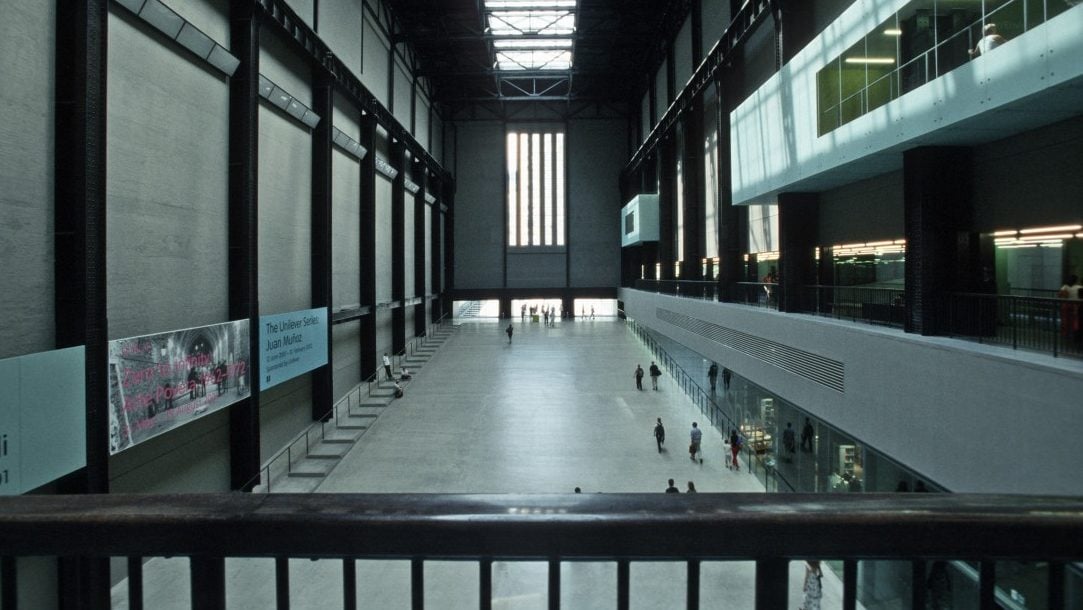As an art historian there is nothing more frustrating than hearing people complain about the uselessness of modern art. “That’s not really art,” they’ll tell you. “My baby brother could have done that.” The judgement that exists amongst those who either think they are expert art connoisseurs of “real” institutionalised art or those who don’t really know anything about art, but quite happily voice their opinions on what they think it is not, represents a certain walled-up mentality that is alarmingly common. The ‘modern art gallery’, or the ‘White Cube’ as it has been previously described by art historians, is in fact a shrine to individual thought; art is not the main focus of such a space and those who assume that it is are attempting to see a traditional, dead art form in an aesthetic that has long been re-born.
Modern art galleries are largely about the experience. The moment we step into a modern exhibition space we fall silent and behave in a way that is reminiscent of how we’d act in a place of worship. The gallery does not allow exterior light to directly penetrate the interior space, creating a chamber-like limbo; a close parallel perhaps to an Egyptian tomb. The ceiling becomes the source of light and the floor is often padded to mute our footsteps, the white walls help us to empty our mind of crowded thoughts. The environment is intended to isolate our body from our mind, to instigate a mindfulness that leaves us fully susceptible to the ideas expressed within the exhibited items. The gallery space turns us into a blank canvas and it is the works on display that paint us and leave their impressions on us.
Entering a gallery space with the preconception that the art “isn’t really art” will not only diminish our experience of the works of art. It is also a violation of the space that is offering us an insight into an entirely different way of seeing and experiencing the world. Take the Tate Modern. A converted power station, it houses a collection of some of the world’s most famous modern art works. Yet what remains its most impressive feature is the huge interior concrete space. With changing installations, the interior space is sculpted according to what is being displayed and we view it diff erently every time we enter it. The blank walls of the contemporary art gallery can prepare our mind for how we should be approaching a work of art on display but equally, the art works shape our perception of the blank space; making it a shifting, tangible entity that exists entirely within our own mind.
In the contemporary era, ideas are more important than art. Installation art galleries like Palais de Tokyo in Paris can become a huge, multi-sensory, dark and humming exhibition space, with video clips on repeat and distant deep-echoing bass that will make the ground rumble. Last summer Palais de Tokyo converted one of its spaces into a horror theme-park; the whole ride was a staged mockery of a fairground ride; it was the concept that mattered and it interacted with every element of the unconscious as much as it did with the conscious senses. In 1958 Yves Klein was one of the first artists who recognised that space was more important than art in the modern gallery. 3,000 people queued to enter his new exhibition, only to find an entirely empty gallery space where everything had been removed and the walls painted white. Klein attempted to help people reach blank status through the blankness of the space, something that continues to exist in modern art galleries today. This blankness can in turn, unlock an unconscious usage of all five of our senses, whilst also stimulating us into expanding the depth of our own thought process. Paris’ PdT mock horror theme park attempted to stimulate both the conscious and the unconscious at the same time, not an unusual feat for contemporary installation exhibitions. Contemporary art installations do however, offer ideas and food for thought, something that the traditional exhibition spaces counteract by their overemphasis on the visual.
In contrast, the Louvre Museum is a cluster of paintings on a wall, a mixture of different genres and periods like some kind of wallpaper. It is an extremely unpleasant and exhausting experience for the viewer. Similarly the Pitti Palace in Florence is a crowded domestic space that has become a clutter of paintings, sculptures, bits of furniture, tapestries that are a glimpse into the traditional cabinet of curiosities. There is no blank space for reflection; instead the overwhelming visual stimuli can throw hundreds of impressions at us at once, annihilating the possibility of subjective interpretation and reflection. There is something refreshing about a modern art gallery for the clarity it gives us within our own way of seeing. Modernism’s refusal to bend to aesthetic convention is to be applauded, not criticised. Creating a universally pleasing aesthetic is no longer the primary purpose of art. Modern art holds the key to blankness and fullness at once, to self-development, and to understanding. Leave the past to the past, and let us, blankly, welcome the modern art gallery with an open mind.



